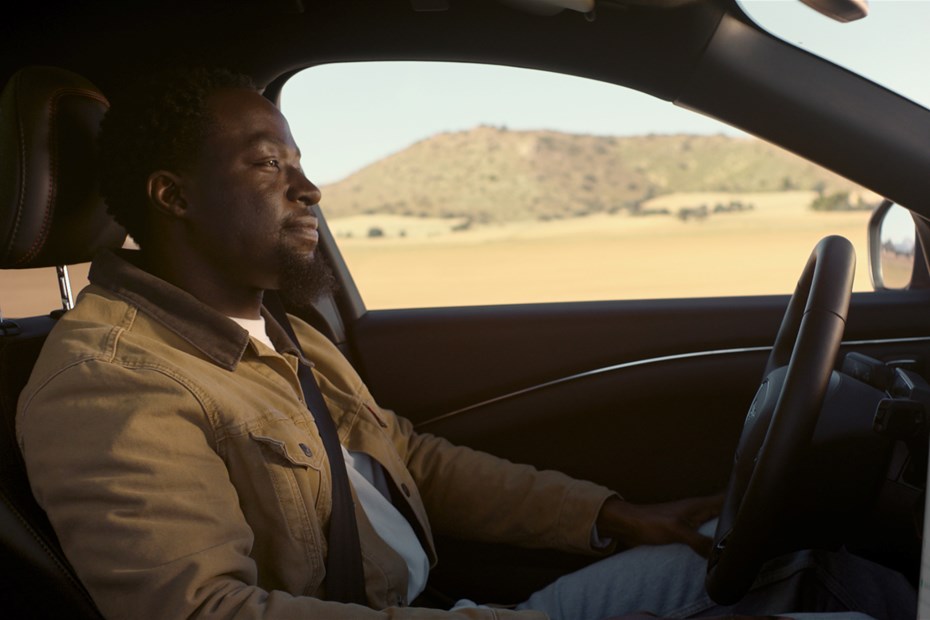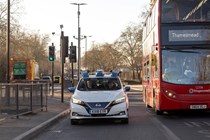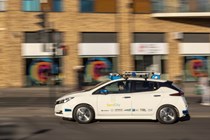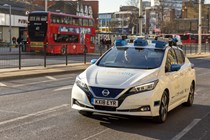The road to fully autonomous vehicles is long, winding and we’re still some way from reaching the end. Arguably, we’ve been on this particular road since the automatic gearbox was invented in 1904. And there have been serious experiments with so-called self-driving cars since at least the 1920s. But slowly and surely, self-driving is becoming a reality.
We’ve taken many strides already. A vast range of advanced driving assistance (ADAS) features have been developed to help relieve the strain of driving and contribute towards safety. After the automatic gearbox, cruise control was the next big advance in the 1950s. Four decades later there was adaptive cruise control, which automatically accelerates and slows a car to match the speed of traffic ahead.
That was followed by autonomous emergency braking, lane keeping assist and automatic lane changing, among others. Tesla’s Autopilot system and ‘robotaxi’ services such as Waymo and GM Cruise generate a huge amount of column inches and social media interest, as well. But how close are we to truly autonomous vehicles? And will you, a regular car buyer, ever own one?
What are self-driving cars?
Self-driving, autonomous driving, robot driving, driverless mobility – whatever term you use, they all mean the same thing. They refer to a vehicle that can drive along a road without any input from the driver for acceleration, braking, steering, road position, lane changes and so on. The car drives itself.
The levels of autonomous driving
What, exactly constitutes self-driving? Helpfully, the Society of Automotive Engineers, a body that promotes and advances vehicle engineering, set out five levels of autonomy that are the internationally recognised standard applied by car manufacturers and legislators.
Level one is the most basic, level five the most advanced. Level two is permitted for general use on UK roads, but a Bill is in progress to provide the legal framework for higher levels of autonomy. The USA and Japan permit level three.
Level 1
At the most basic level of driving autonomy, the vehicle can assist with steering and braking/accelerating, but not simultaneously. This tech has been around since the 1990s when it first appeared on the Mercedes S-Class.
Level 2
This is the level currently allowed in the UK. The car can take over multiple functions from the driver, for instance the steering and braking. That means the car could perform an emergency stop while dodging an obstacle. Many of the latest cars have level two functionality which covers ADAS features such as adaptive cruise control, autonomous lane changing, automated lane-keeping systems and automatic parking.
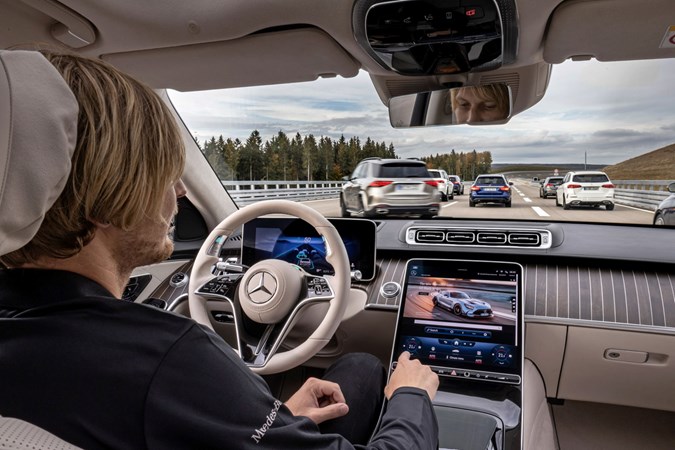
Level 3
This is the next big step for autonomous vehicles and several manufacturers already make cars that meet it. It allows all aspects of driving to be done autonomously, but only under certain circumstances. It also requires a driver to be sat behind the steering wheel to take over at any moment along with highly detailed road mapping and a phalanx of on-board sensors.
Level 4
At this level, the car is capable of fully autonomous driving – without a driver behind the wheel – but only in certain areas that are mapped to an extremely high degree of detail. Real-world trials of this level of autonomy are under way, including driverless buses and robotaxis.
Level 5
The ultimate level of autonomy requires no intervention from a driver at all. The occupants are just passengers. That’s also true of level four, but the difference is that level five can work without detailed mapping of the environment – it can make it up as it goes along, as a human driver can.
Where are autonomous vehicles now?
Fully autonomous vehicles are widely used throughout the world. Large factories and ports make extensive use of autonomous cargo-carrying vehicles that follow designated routes and respond to obstacles and errant pedestrians.
In the UK, autonomous buses are being trialled in Milton Keynes. In San Francisco, Waymo and GM Cruise have been running robotaxis for a number of years. But what self-driving vehicles are available to the public?
We’re currently somewhere between levels two and three. Ford offers the most sophisticated self-driving system currently available in the UK. Buy a new Ford Mustang Mach-e and you can subscribe to BlueCruise which ties together various systems including adaptive cruise control, lane keeping assist, speed limit recognition and autonomous lane changing. Set BlueCruise going and you, the driver, don’t need to have any direct input in operating the vehicle.
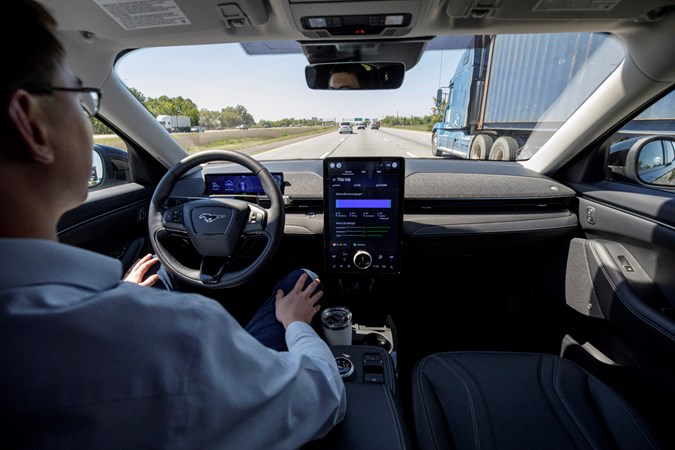
As such, BlueCruise is broadly similar to Nissan’s ProPilot package and Tesla’s controversial Autopilot system. But BlueCruise is the only system with which you’re legally allowed to take your hands off the steering wheel. Drive a Nissan or Tesla and your hands must be on the wheel at all times.
BlueCruise alerts the driver when they can take their hands off. That currently only happens on a few designated stretches of motorway, mostly on the M25 and M40. Mercedes-Benz is testing its similar Drive Pilot system in Germany and there are cars that are level three and even level four compatible, such as the Lotus Eletre. Once the legislation is in place to allow use of those systems, they can be turned on via over-the-air update.
What’s the UK law on autonomous vehicles?
Limited use of autonomous vehicles is currently allowed on UK roads but only with specific legislation and very tight restrictions. There are autonomous bus projects, most notably in Milton Keynes, and level three autonomy that allows ‘hands-off’ driving is available in the Ford Mustang Mach-e, albeit only on designated roads.
Unrestricted use of level three autonomy was originally intended for 2021, then 2022. However, the 2023 King’s Speech included new legislation that will define the legal framework for autonomous vehicles of level three and above to be widely used on UK roads.
The Automated Vehicles Bill puts liability for the vehicle’s actions while in self-driving mode on its manufacturer, including speeding and accidents. It also tightens the rules around how self-driving systems can be advertised. These and other measures should provide the legal clarity needed for autonomous vehicle development and sales to go ahead.
The Bill will start making its way through Parliament in 2024. It’ll take a long time and its passage will be interrupted by the upcoming General Election. However, it’s highly unlikely that a change in Government will halt the Bill.
Our robotaxi ride
Robotaxis are frequently touted as the next big leap. They’re self-driving cars that pick up and drop off passengers without any human interaction. It’s expected to be a huge business, some estimates valuing it at $4 trillion by 2027.
We sampled a level four autonomous robotaxi on public roads, courtesy of Nissan and Smart Mobility Moving Lab. The partnership has mapped 24km of roads in east London and installed 270 cameras to monitor the routes.
Completely driverless cars aren’t allowed on UK roads, so the Nissan Leaf we rode in had a human driver to intervene in an emergency.
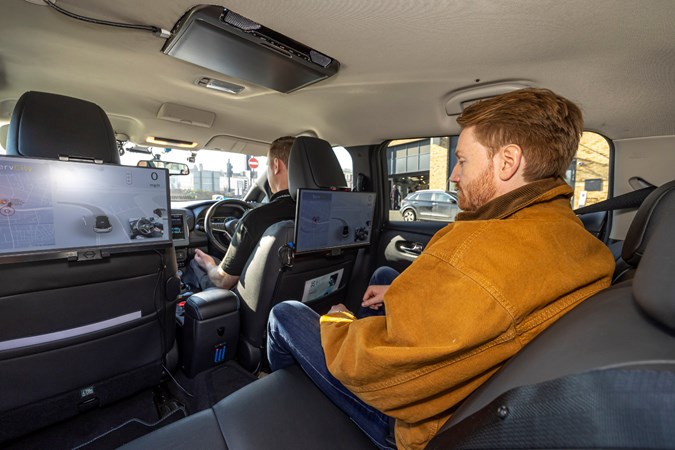
The Leaf is fitted with loads of extra tech to make autonomous driving possible including four lidars, several radars and nine cameras. It can access phone masts to triangulate its exact position, plus the project’s own infrastructure. Back seat passengers have screens showing what the car can ‘see’ and what it’s doing.
The ride was startingly good – certainly better than a 3am Uber. The Leaf accelerated and braked smoothly, pulled away from traffic lights promptly, lane discipline was spot-on, it even moved over half a lane to clear a line of parked cars.
But it’s the integration with the infrastructure that’s most impressive. The car can ‘see’ stopped vehicles via the roadside cameras, highlighting them in red on the screen. It knew about a stopped bus more than 500 metres ahead, making a lane change in anticipation. No human would have the information to do likewise.
Our test driver only intervened once, to avoid an enormous pothole that the system couldn’t detect. It’s can also be outfoxed in poor weather, especially snow which can clog the sensors and obscure the cameras’ view.
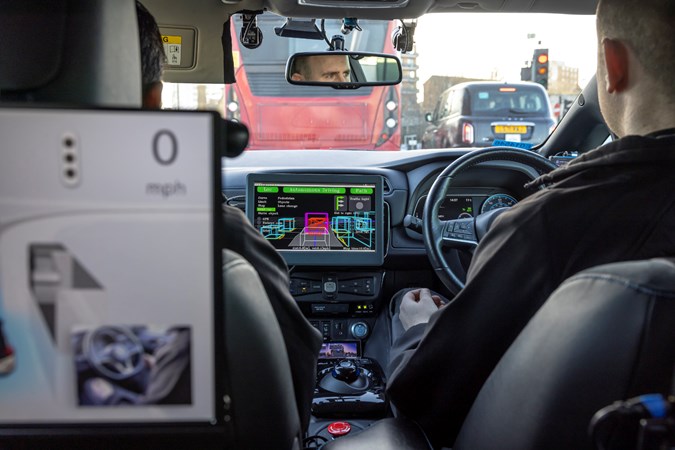
The pros of autonomous vehicles
Autonomous vehicles could bring many benefits – improved safety is touted more than any other because they essentially eliminate human error. Tesla CEO Elon Musk said he ‘would be shocked’ if Tesla’s semi-autonomous technology wasn’t safer than a human.
Autonomous vehicles could also bring mobility to people who can’t drive, particularly those in rural areas. Not just with autonomous cars – autonomous buses could have the biggest impact on remote communities. Being more profitable than a conventional bus, low use routes could be more viable.
The extra information they have on their surroundings could even make autonomous vehicles more efficient. The Nissan Leaf robotaxi we rode in achieved a creditable 3.7 miles per kWH, despite carrying over 100kg of additional tech.
The cons of autonomous vehicles
Despite the advances, the latest generation of autonomous vehicle tech is still in its infancy. Problems do crop up including serious accidents, among them a number of fatal accidents involving Teslas running in Autopilot mode that were ultimately caused by the car’s computers misinterpreting what they were seeing.
San Francisco’s robotaxis have been far from trouble-free. Gridlock has been caused several times when two of them have met at a junction and been unable to interact. Indeed, there has been significant backlash from San Francisco residents, and those in other cities with robotaxi trials.
There’s also a really big problem with users of semi-autonomous vehicles such as Teslas trusting the tech too much. Director of research at vehicle safety institute Thatcham said: ‘People overtrust technology and don’t see differences between assisted [driving] and automatic [driving].’
Privacy is a growing concern, too. Level four and five autonomy, in particular, rely on a huge amount of data from maps and cameras, and exchanging data with other cars and connected infrastructure. That’s a level of surveillance – both real and perceived – that we’ve not encountered before.
There’s also questions about autonomous vehicles’ ability to interact with older, ‘unconnected’ machinery, how well they would cope with narrow roads in poor condition, and those not covered by connected infrastructure such as remote country lanes.
Will you ever own a fully autonomous vehicle?
Fully autonomous cars have been five years away for at least the last two decades. In reality, the tech is likely to first become widespread on the road in the haulage and bus industries. They would benefit massively from not having to accommodate breaks, or deal with driver shortages.
As for cars, full autonomy is likely still a long way off, though level three autonomy will become increasingly common once the legal framework for its use is in place.
We asked software developer Argo AI’s director of communications, Alan Hall, whether or not private car buyers will have access to fully autonomous cars. ‘The short answer is yes, at some point,’ he commented. ‘We think at some point in the future as the hardware (sensors and computing) will get more advanced and more affordable (due to innovation and scaled manufacturing), the business case will become clear for offering autonomous functionality in personally owned vehicles.’
It’s worth noting that Argo AI shut down in 2022 having lost its major investors, Ford and Volkswagen, who took their autonomous vehicle projects in-house.
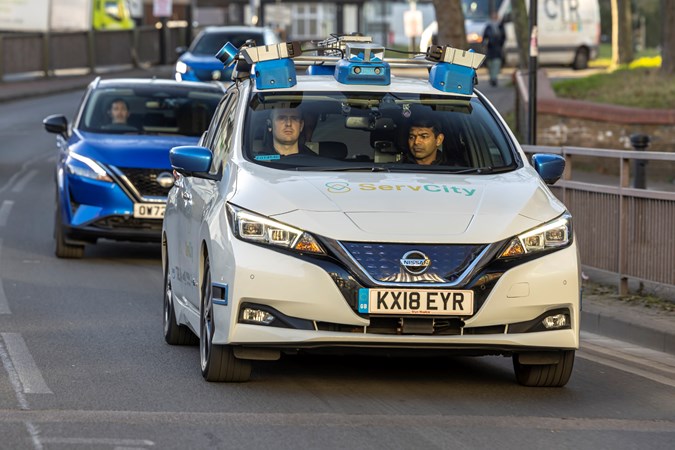
Not everyone is as optimistic. Sales and marketing director of last-mile autonomous transport specialist Aurrigo, Miles Garner, said: ‘2021 was supposed to be the year. Fully autonomous is very, very tough to do. Fully autonomous passenger cars are a long, long way off.’
However, Garner reckons autonomous vehicle technology will play a part in our future, just through a third party service (such as a robotaxi) rather than in a privately owned capacity. ‘Pay as you go, monthly, I can see that in the future,’ he said. ‘Autonomous vehicles [that] just operate around on our roads. I think personal vehicles could be on their way out.’
Meanwhile, autonomous vehicle maker Oxa has shifted its focus from self-driving cars for the masses to autonomous vehicles with ultra-specific tasks, such as ferrying mining equipment in rural areas.
Just so you know, we may receive a commission or other compensation from the links on this website - read why you should trust us.


